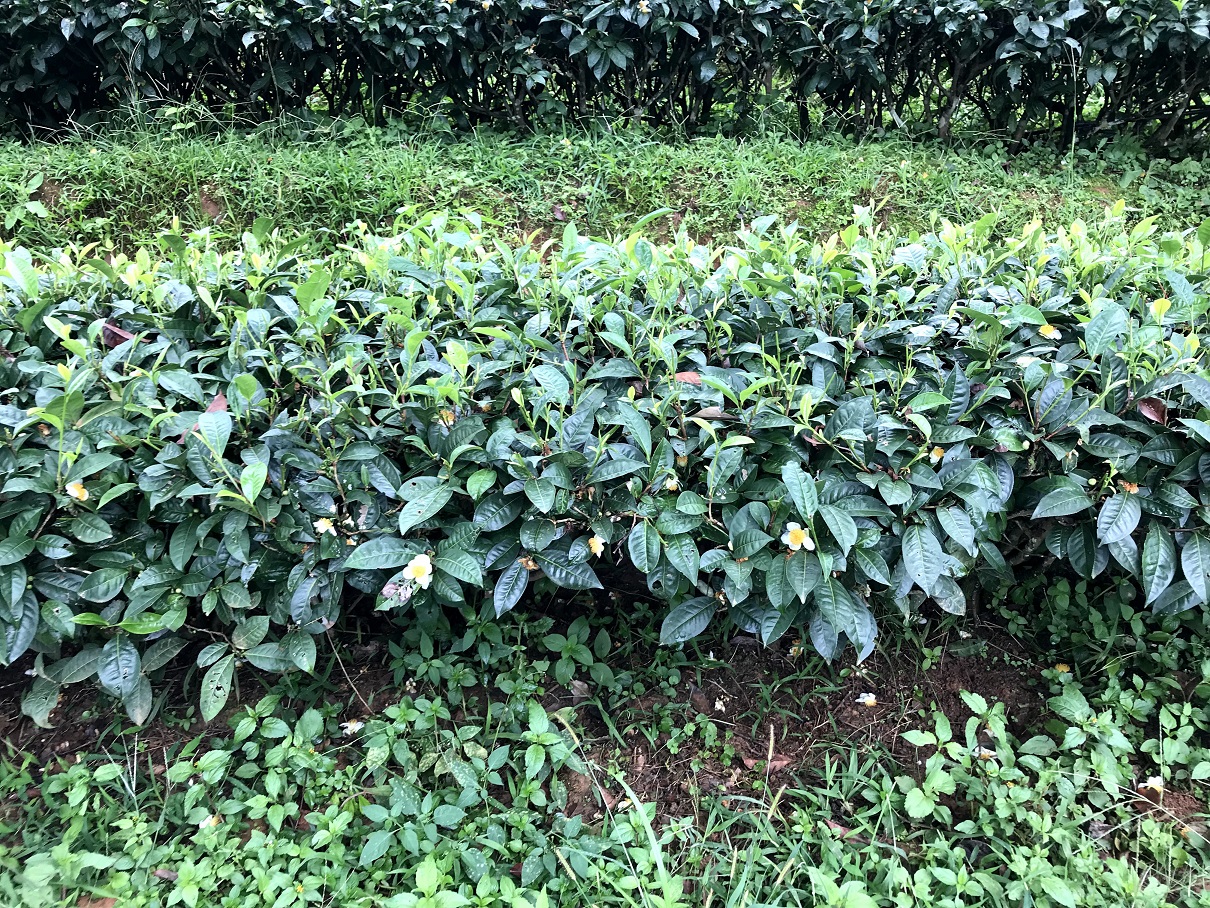In the process of diffusion and migration, tea trees have undergone various changes in order to adapt to local environmental conditions. In the long-term natural selection, six ecological types have been formed.

(1) Low latitude and high above sea level, high arbor large leaf type. It is the most suitable ecological area of tea trees and it is the center of cultivation of tea trees. It is located in the south-central area of Yunnan, which is located at the south of the 23 degree north latitude and 800-2500 meters above sea level. The annual average temperature is between 18°C - 24°C, the extreme lowest temperature is not lower than 0°C, the frost-free period is more than 300 days, the annual precipitation is 1500-2000 mm, the soil is dominated by latosolic red soil and red soil, and it belongs to the south subtropical evergreen broad-leaved forest area. The tea tree is arbor-type, the leaves are extra large or large, the buds are strong, the tea polyphenols and caffeine are high, and the amino acids content are moderate. This ecological area has mostly wild type large tea trees.
(2) South subtropical (including marginal tropics) arbor large-leaf rainforest type. To the south of the Tropic of Cancer, below 550 meters above sea level, the annual average temperature is 20°C-26°C, the extreme lowest temperature is above 0°C, the annual precipitation is 1800-2000 mm, the soil is latosolic red soil or red soil, which is belong to tropical monsoon rainforest and rainforest areas, including southeastern Yunnan and southern Guangxi. This area is also the most suitable ecological area for tea trees. It has no frost all year round and can grow all year round. Most of the tea trees are arbor-type, with large leaves, high polyphenol and moderate amino acids content.
(3) South Subtropical small arbor tree large leaf type. It is between 24 degrees and 26 degrees north latitude, 300-1000 meters above sea level, the annual average temperature is 18°C-24°C, the lowest temperature is below 0°C, the annual precipitation is 1200-1800mm, and the soil is mainly red soil. . It belongs to the south subtropical evergreen monsoon forest region, including Guangxi and north-central Guangdong, Hunan and southern Jiangxi. This area is a suitable ecological area for tea trees. Tea trees are mostly small arbor trees, with shrubs, large and thick leaves, high polyphenol and low amino acids content.
(4) Mid-subtropical small arbor trees with large mid-leaf type. It is located in the south of the Yangtze River at 26 degrees to 30 degrees north latitude, below 800 meters above sea level, the annual average temperature is 16°C-19°C, the frost-free period is about 300 days, the annual precipitation is 1200-1500 mm, and the soil is red soil and red yellow soil. Mainly, it belongs to the mid-subtropical evergreen broad-leaved forest area. This area is a suitable ecological area for tea trees. The tea tree has a dormant period of 2-3 months throughout the year. Most of them are small arbor type, with shrub type, large morphological variation, large or middle leaves, thick cuticles of leaves, tea polyphenols, amino acids, caffeine content are moderate.
(5) Mid-subtropical large, medium, and small leaf types of shrubs. The north and south regions of the middle and lower reaches of the Yangtze River at 30 degrees to 32 degrees north latitude, below 300 meters above sea level, the annual average temperature is 15°C-18°C, the frost-free period is 220-250 days, and the extreme lowest temperature can reach minus 8°C to minus 10°C. The annual precipitation is 900-1200 mm, and the soil has red soil, red yellow soil, yellow brown soil and so on. It is a subtropical evergreen broad-leaved deciduous and coniferous mixed forest area. This area is a suitable ecological area for tea trees, and it is also a north-south transition zone for tea trees. It has a dormant period of 4-5 months throughout the year. The tea tree is rich in morphological diversity, the tree type is shrub type, and the leaves have large, medium and small leaves. Low tea polyphenols and high amino acids content are its main features.
(6) Northern subtropical and warm temperate zones, middle and small leaf types of shrubs. It is located at the north of the Yangtze River at 32 degrees to 35 degrees north latitude, south of the Qinling Mountains, east of Daba Mountain to the coastal area, and below 200 meters above sea level, including Jiangsu, Anhui, northern Hubei, Henan, Shaanxi, and southern Gansu. This area is a north subtropical and warm temperate monsoon climate with an average annual temperature of 13°C-16°C. The extreme lowest temperature can reach below minus 15°C, the frost-free period is 200~240 days, the annual precipitation is below 1000 mm, and the soil is mainly yellow brown soil, yellow cinnamon soil and purple soil, which is slightly acidic. Vegetation is dominated by coniferous forests and deciduous broad-leaved forests, inter- or mixed evergreen broad-leaved forests. This area is the second suitable ecological area for tea trees. It has a dormant period of more than 5 months throughout the year.
